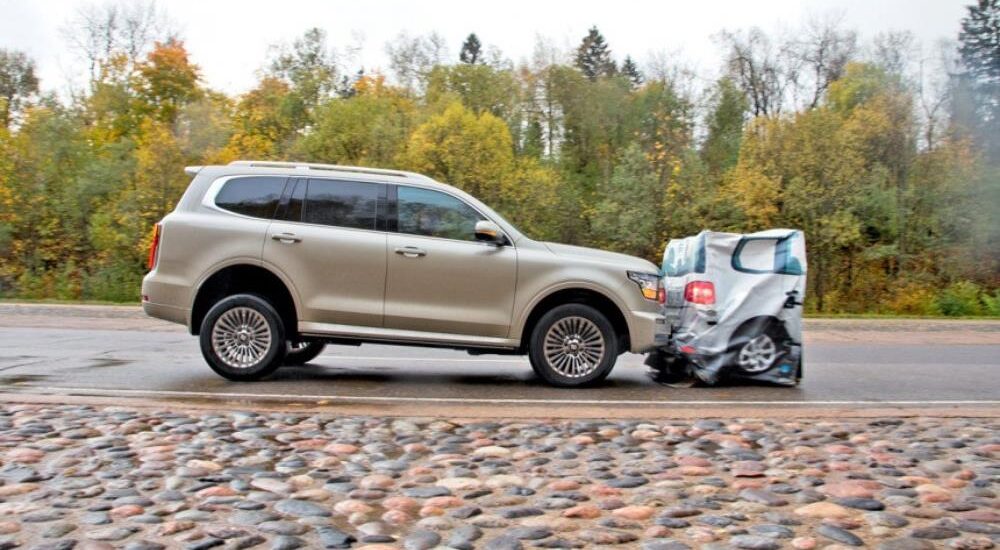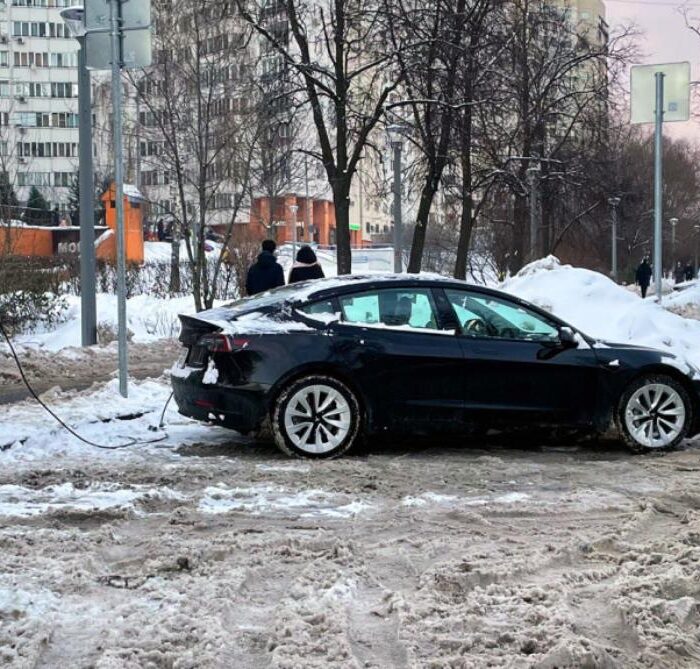Vous attrapez votre téléphone, vous réglez la température et, soudain, vous levez les yeux pour voir les feux stop s’écraser sur le capot de votre voiture. C’est une expérience que personne ne devrait vivre, mais dans mon travail, je dois parfois simuler ces « accidents » intentionnellement sur une piste d’essai, bien sûr, pour évaluer les performances de l’électronique de sécurité. Le moment est idéal pour évaluer l’efficacité de ces « antidotes », en particulier dans les voitures chinoises.
L’histoire de la détection automatique d’obstacles dans les véhicules remonte à 1959 avec le concept car Cadillac Cyclone, qui comportait deux radars sur ses ailes avant en forme de fusée. Toutefois, ce n’est qu’en 1995 que Mitsubishi Diamante a commencé à équiper ses voitures de série d’un système d’alerte similaire. Dix ans plus tard, la Mercedes Classe S W221 a introduit le freinage automatique. Depuis lors, cette technologie est devenue de plus en plus courante, même dans les véhicules plus abordables et produits en série.
Les constructeurs chinois ont rapidement adopté ces technologies de sécurité. Huit des dix finalistes de notre test d’évaluation sont équipés de systèmes de freinage automatique, et sept d’entre eux en font une caractéristique de série. Mais peut-on vraiment faire confiance à l’électronique chinoise ?
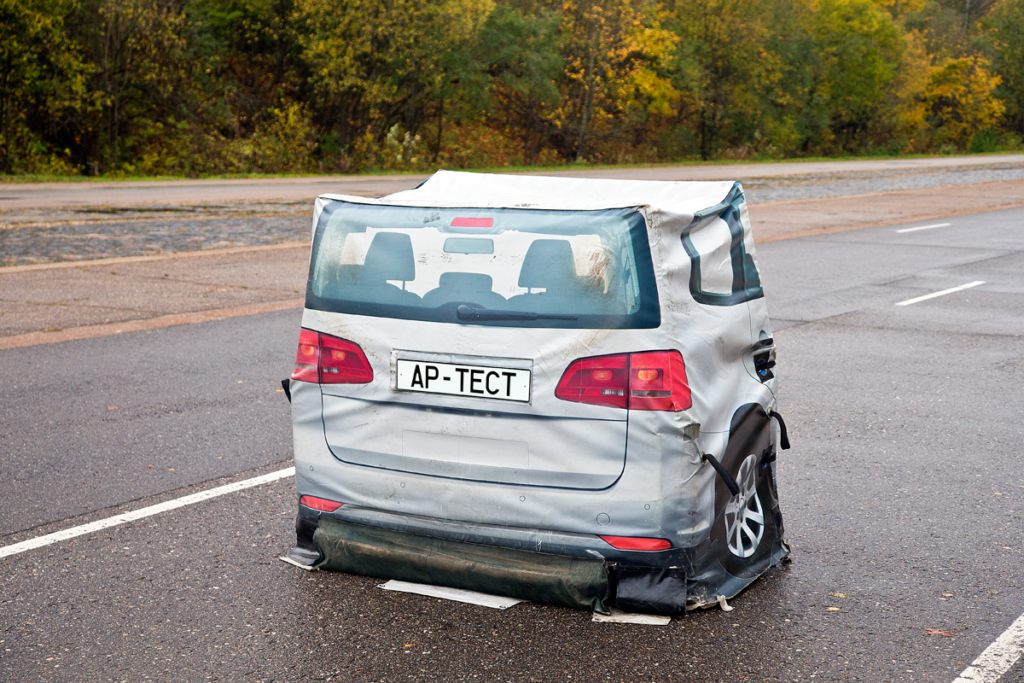
Pour nos tests, nous déployons une cible certifiée simulant l’arrière d’une camionnette Volkswagen Touran sur les routes spéciales de notre terrain d’essai. La méthode est simple : Je roule directement vers la Touran à l’arrêt à des vitesses de 30, 40 ou 50 km/h. Le système émet d’abord une alerte sonore et visuelle avant de déclencher le freinage d’urgence, même si je continue à appuyer sur l’accélérateur. En règle générale, il est possible de régler la distance d’alerte dans les paramètres du système, mais ces réglages n’affectent pas l’intervention du freinage d’urgence.
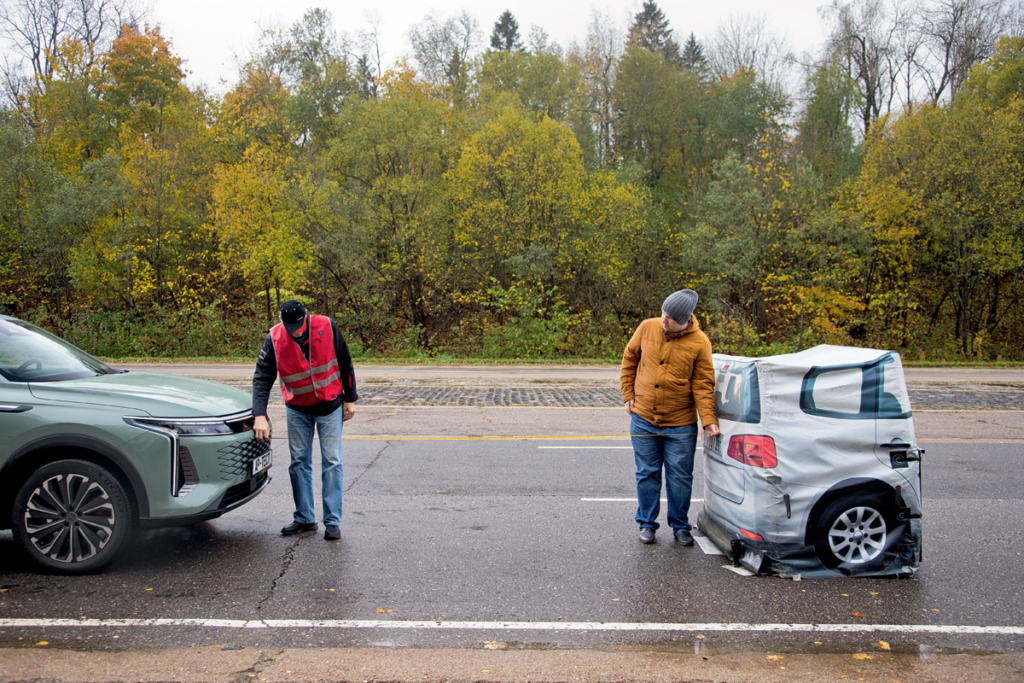
Au volant du crossover Exeed RX, on se sent en sécurité. Que ce soit à 30 ou à 50 km/h, il freine préventivement, comme s’il jaugeait la surface de la route, s’arrêtant à plus de trois mètres de la cible. Le Tank 500 donne des résultats presque identiques, s’arrêtant toujours à la même distance de sécurité de la cible, quelle que soit la vitesse.
Certes, nous avons hésité à nous fier aux systèmes chinois et avons choisi de ne pas faire de tests à grande vitesse – pas plus de 50 km/h. Même les constructeurs européens ne garantissent pas l’efficacité à 100 % du freinage automatique ; les manuels indiquent souvent que le système empêchera ou atténuera la collision. En outre, selon les protocoles Euro NCAP, les systèmes de freinage automatique sont testés à des vitesses urbaines, ce qui signifie en Europe un maximum de 50 km/h.
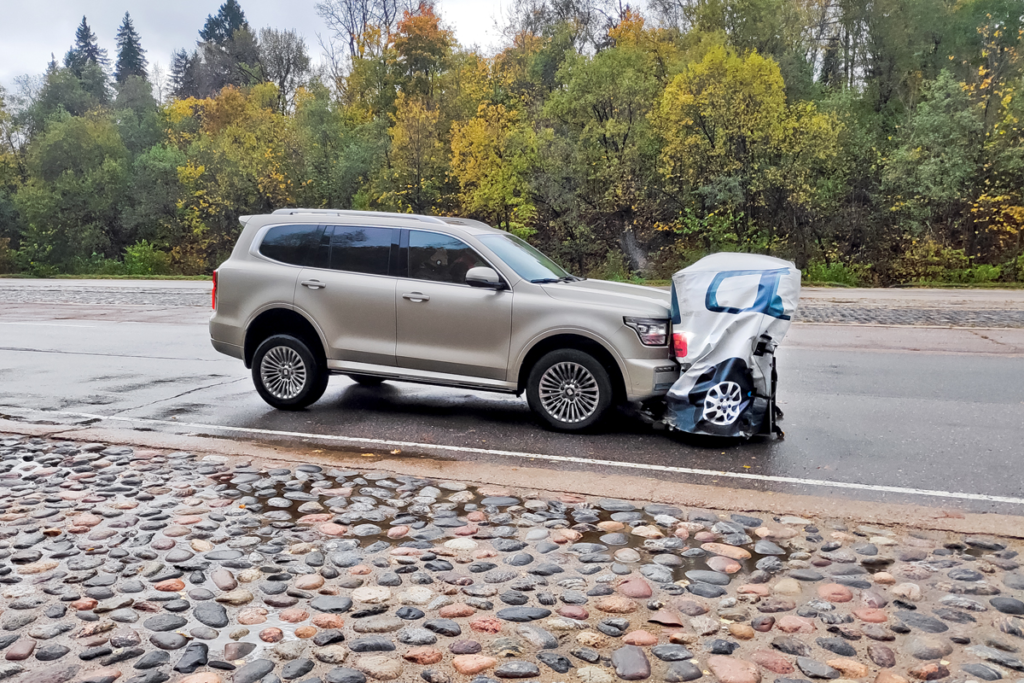
Cependant, le freinage décisif du Tank et son pare-chocs robuste m’ont inspiré suffisamment de confiance pour que je le teste à 70 km/h. Comme le montre l’une des photos, la cible a été propulsée sur une dizaine de mètres ! Ainsi, si le freinage a bien eu lieu, il n’a pas été totalement efficace. En effet, le manuel de la voiture indique que le système « active le freinage actif pour réduire la vitesse du véhicule, minimisant ainsi les conséquences des collisions ». Heureusement, le test s’est terminé sans dommage : le pare-chocs et la calandre sont restés intacts. Si un vrai véhicule avait remplacé la cible molle, les dégâts auraient été inévitables.
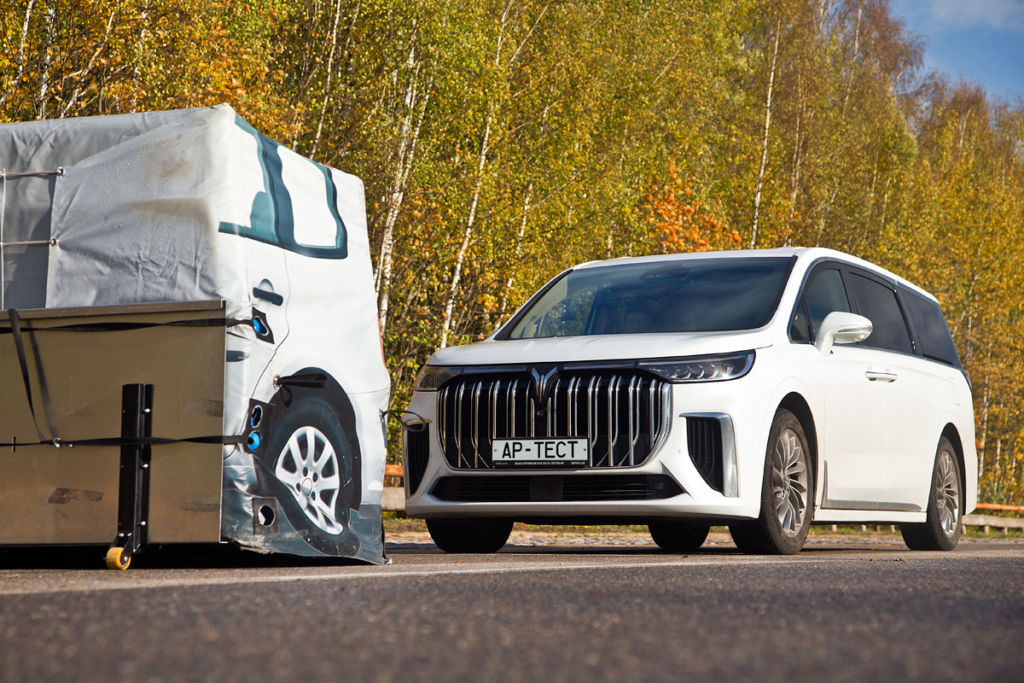
Le monospace Voyah Dream s’est classé troisième en termes de performance de freinage préventif, s’arrêtant de manière fiable à 2,4-2,8 mètres de la cible. Son compagnon de plate-forme, le Voyah Free, a commencé à mettre les nerfs à vif ; après avoir émis des avertissements sonores et visuels, il a commandé le freinage au dernier moment, laissant moins d’un mètre de l’obstacle – une expérience plutôt éprouvante.
J’ai choisi de ne pas tester le troisième modèle de Voyah, la berline électrique baptisée Passion, dans des conditions similaires. En inspectant le véhicule, j’ai découvert des dispositifs pyrotechniques à côté des charnières du capot, conçus pour soulever l’arrière du capot d’une dizaine de centimètres en cas de collision avec un piéton afin de réduire l’impact des blessures. Bien que potentiellement bénéfiques pour les piétons, ces dispositifs ne sont pas idéaux pour les essais. Je me souviens que lors de nos essais avec la Mazda 6, ces dispositifs pyrotechniques se sont déclenchés de telle sorte que le capot s’est déformé de manière significative. Non, nous ne prendrons pas le risque d’endommager la carrosserie (et le budget éditorial).
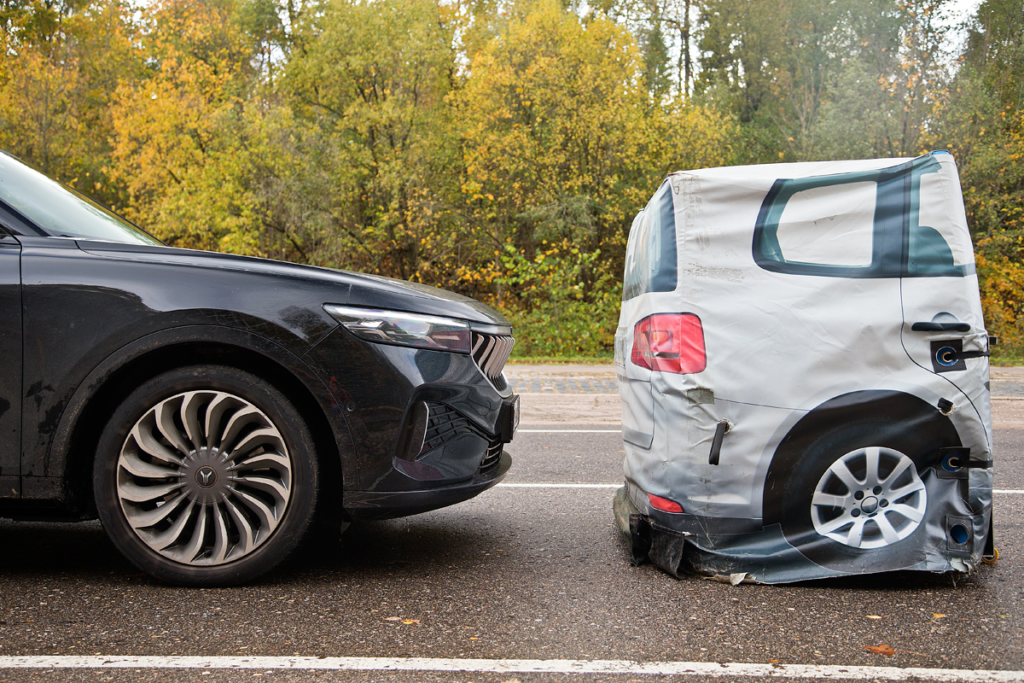
En conclusion, même si certains sont plus performants que d’autres, ces systèmes fonctionnent. Si un conducteur est inexpérimenté ou fréquemment distrait, par exemple par son smartphone, l’électronique constitue un filet de sécurité crucial. Cela vaut non seulement à l’approche d’un autre véhicule, mais aussi lorsqu’il rencontre des piétons ou des cyclistes sur la route.
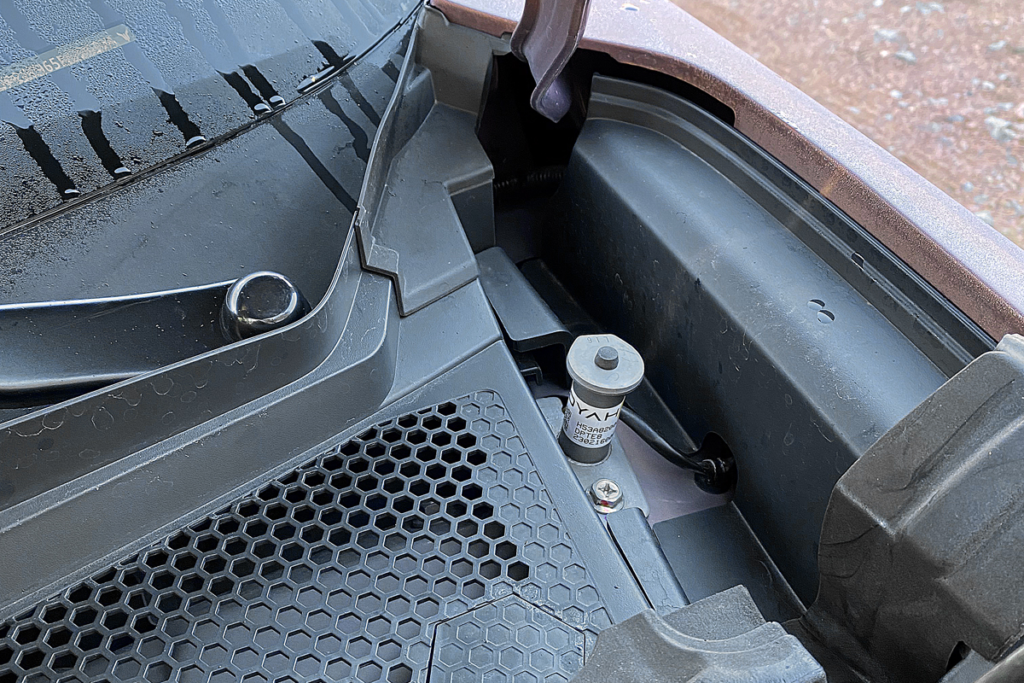
Oui, les ingénieurs chinois apprennent vite et intègrent rapidement dans leurs véhicules des fonctions qui, jusqu’à récemment, étaient rares, même chez les constructeurs automobiles européens. Vous cherchez un régulateur de vitesse adaptatif ? C’est fait. Le centrage sur la voie ? Absolument. L’autoroute M11, qui fait partie de notre itinéraire d’essai, constitue un cadre idéal pour évaluer ces systèmes. Si ces fonctions peuvent être peu utilisées en ville, sur une autoroute à grande vitesse avec des marquages clairs, il est presque instinctif d’activer le pilote automatique.
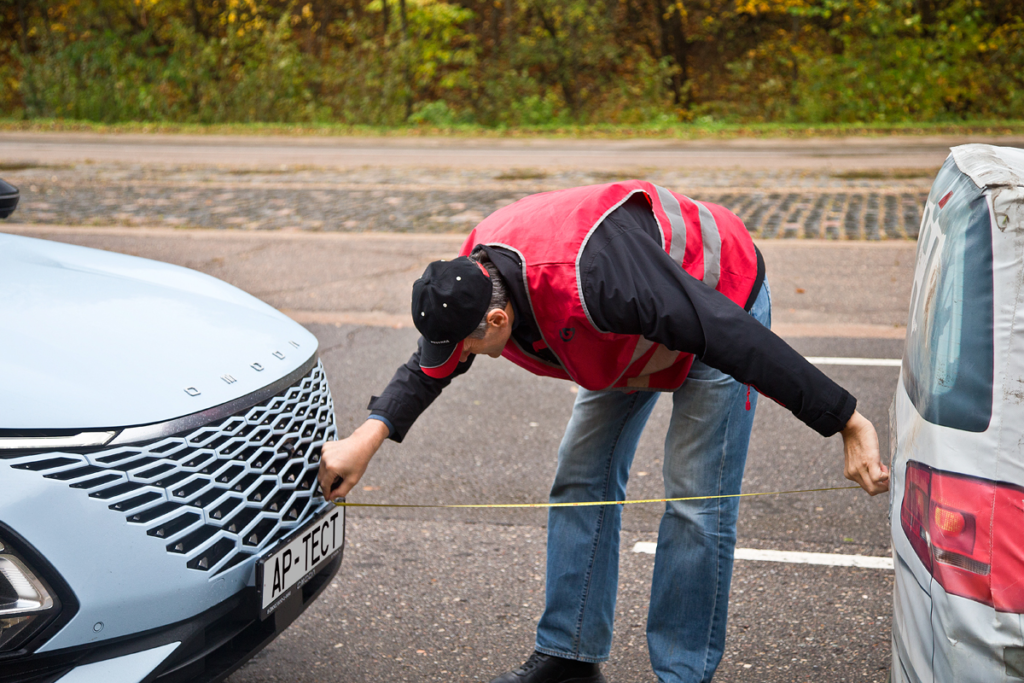
De manière surprenante, le crossover le moins cher de notre gamme, l’Omoda C5, s’est avéré être le plus autonome en termes de capacités de pilotage. Alors que d’autres véhicules dotés d’un régulateur de vitesse adaptatif et d’un système de suivi de voie permettent une conduite mains libres pendant seulement 15 à 20 secondes, l’Omoda peut maintenir son autonomie pendant 5 à 10 minutes ! Vous ne pouvez pas dormir au volant, mais vous pouvez certainement savourer un sandwich et une boisson. Cependant, il est conseillé de garder les mains sur le volant, car les réglages nerveux de la direction du véhicule peuvent être assez déconcertants, en particulier lors des manœuvres de dépassement de gros camions, où l’électronique de l’Omoda peut brusquement secouer le volant, en essayant de maintenir l’intégrité de la voie à des vitesses de 130 km/h.
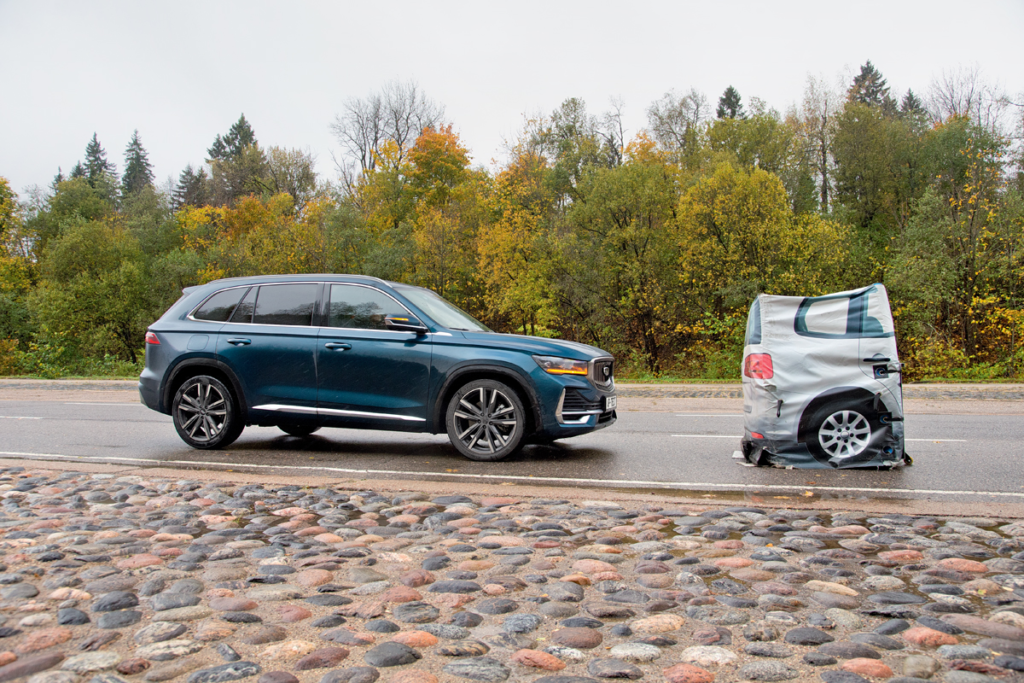
Le régulateur de vitesse adaptatif de l’Omoda est simple à utiliser : il s’active en appuyant sur deux boutons au volant et dispose d’un algorithme intuitif d’ajustement de la vitesse. Le limiteur de vitesse est tout aussi convivial, même si le contrôle des réglages actuels sur l’écran peut s’avérer un peu fastidieux. De manière inattendue, l’image d’une moto apparaît au centre de l’écran, où sont affichés l’état de la route et les marquages, même lorsqu’aucune moto n’est présente sur la route ! Ce « fantôme » est apparu plus d’une fois sur l’écran pendant la pluie…
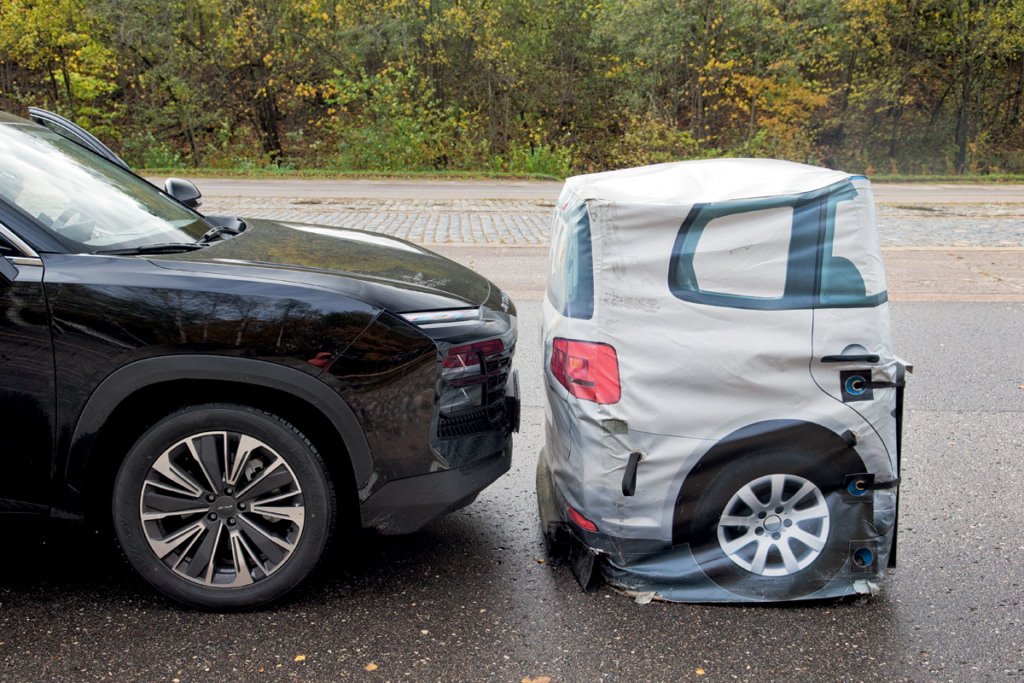
Les régulateurs de vitesse et l’électronique de conduite des autres véhicules suscitent moins d’émotions. Les régulateurs de vitesse les plus conviviaux (y compris le réglage de la vitesse) se sont avérés être ceux des deux chars. Ils partagent un mécanisme de commande similaire via une tige sur la colonne de direction, qui, bien que cachée, a une logique simple qui devient une seconde nature après quelques utilisations. Il y a un mode limiteur de vitesse avec des intervalles pratiques de un ou dix kilomètres par heure, et le centrage de la voie est également disponible, fonctionnant beaucoup plus en douceur que sur l’Omoda.
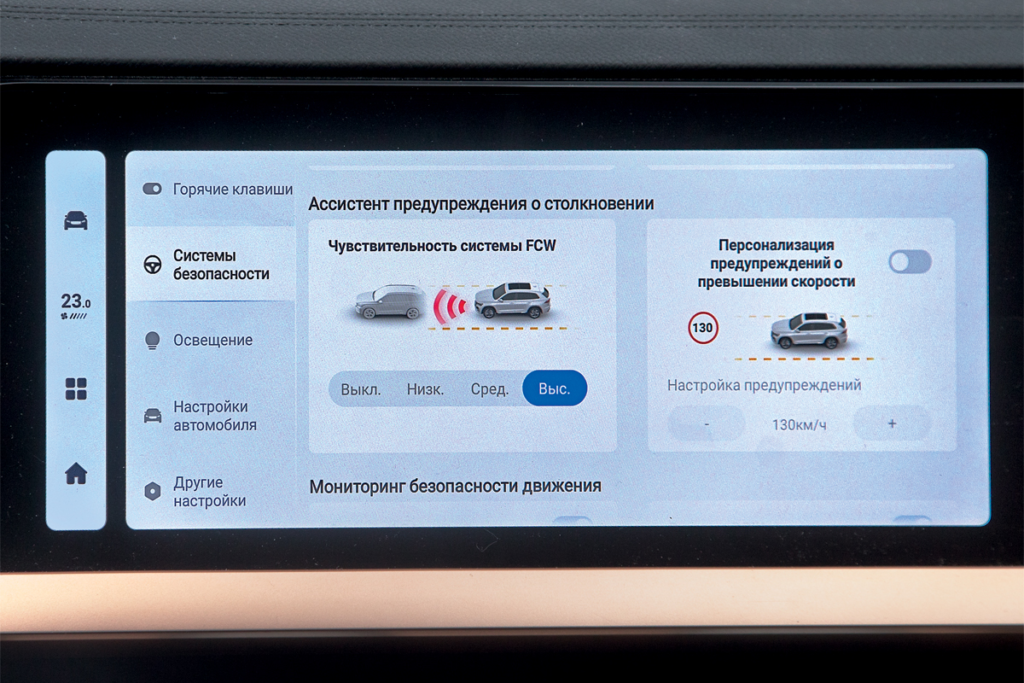
Dans d’autres voitures, le régulateur de vitesse est géré par les branches du volant, et cette configuration est tout à fait satisfaisante avec des boutons physiques. Cependant, les écrans tactiles réduisent immédiatement la convivialité : ils augmentent le nombre d’erreurs lors du réglage de la vitesse et de la distance. C’est exactement ce qui se passe dans la Voyah Passion électrique. Bien que l’écran fournisse des informations très claires sur la situation routière (jusqu’à la représentation des ouvriers routiers et des cônes avec lesquels ils ont bouclé un tronçon pour des réparations), dans la pratique, la simplicité des réglages est plus importante. Cela permet de ne pas se laisser distraire par la route.
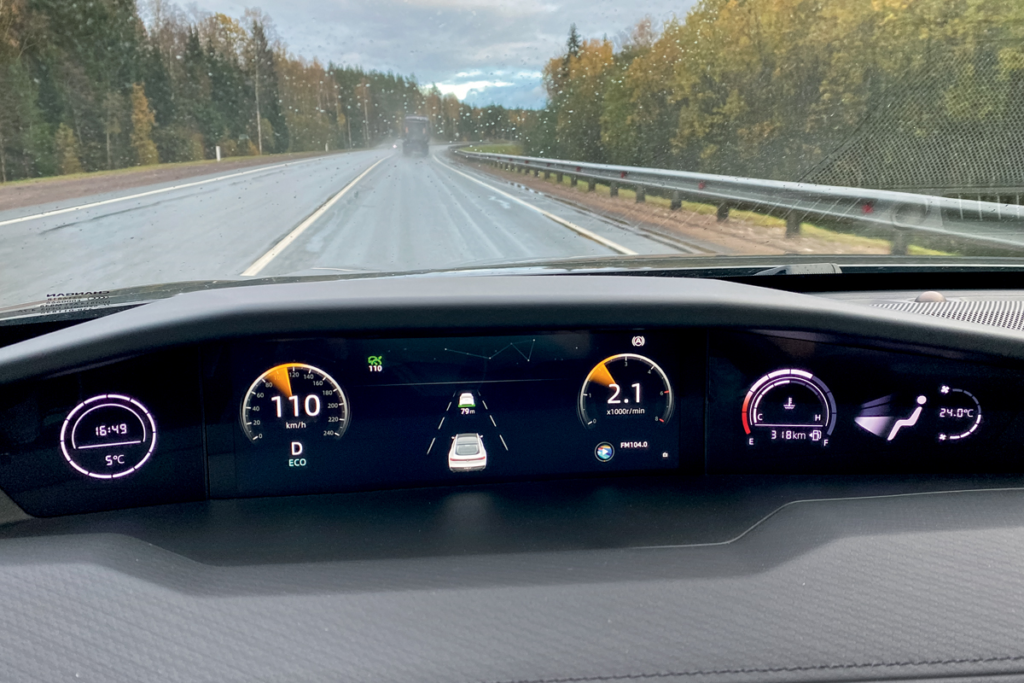
De ce point de vue, le Jetour Dashing s’est avéré le plus difficile à utiliser en termes de régulateur de vitesse. Sa tentative d’imiter Tesla est remarquée : la « croisière » est réglée par des molettes sur le volant, qui dans d’autres modes contrôlent les rétroviseurs et la température de l’habitacle. D’où une confusion permanente pendant le trajet ! De plus, les valeurs de réglage de la vitesse de croisière adaptative ne sont pas affichées sur le tableau de bord mais sur l’écran central. Vous tournez les roues du volant, regardez la « TV » à droite, cherchez les petits chiffres de la vitesse, et par conséquent, vous êtes plus distrait de la route que dans d’autres voitures.
En outre, Dashing ne propose pas encore de système de suivi du marquage au sol sur le marché russe. Et même dans la version supérieure, il n’y a pas de limiteur de vitesse. Dans l’ensemble, il n’est pas surprenant que le Dashing se retrouve en bas de notre classement des régulateurs de vitesse.
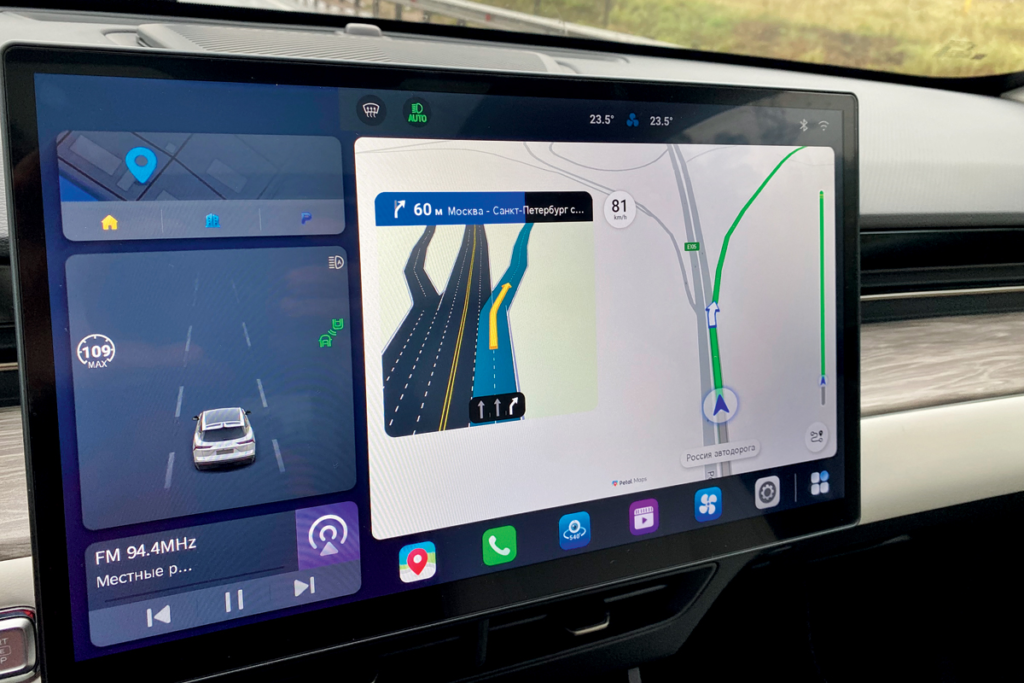
Nous avons attribué des points d’expert aux dix voitures pour la facilité de gestion du régulateur de vitesse et des autres systèmes d’aide à la conduite. Les trois meilleures sont la Tank 500, la Tank 300 et la Geely Monjaro. Toutes ces voitures offrent la gestion la plus confortable des systèmes et permettent de se détendre au volant, aussi bien sur les longs trajets que dans la circulation urbaine.
Voici les informations présentées sous forme de tableau :
| Vitesse | Exeed RX | Geely Monjaro | Jetour Dashing | Omoda C5 | Réservoir 500 | Rêve de Voyah | Voyah Free |
|---|---|---|---|---|---|---|---|
| 30 km/h | 3 m | 1.18 m | 0.74 m | 0.93 m | 2.97 m | 2.74 m | 0.78 m |
| 40 km/h | 3.7 m | 0.8 m | 0.07 m | 1.3 m | 2.95 m | 2.84 m | 0.82 m |
| 50 km/h | 3.2 m | 0.62 m | * | 1.5 m | 2.96 m | 2.36 m | 0.76 m |
* Les tests n’ont pas été effectués à 50 km/h pour le Jetour Dashing en raison de l’activation tardive du système à 40 km/h.
Photo : Dmitry Piterskiy | Igor Vladimirskiy | Oleg Rastegaev
Groupe d’experts : Andrey Mokhov
Il s’agit d’une traduction. Vous pouvez lire l’article original ici : Машины рейтинг-теста : испытания систем адаптивных и даптивных круиз-конролей

Publié Octobre 03, 2024 • 8m à lire

